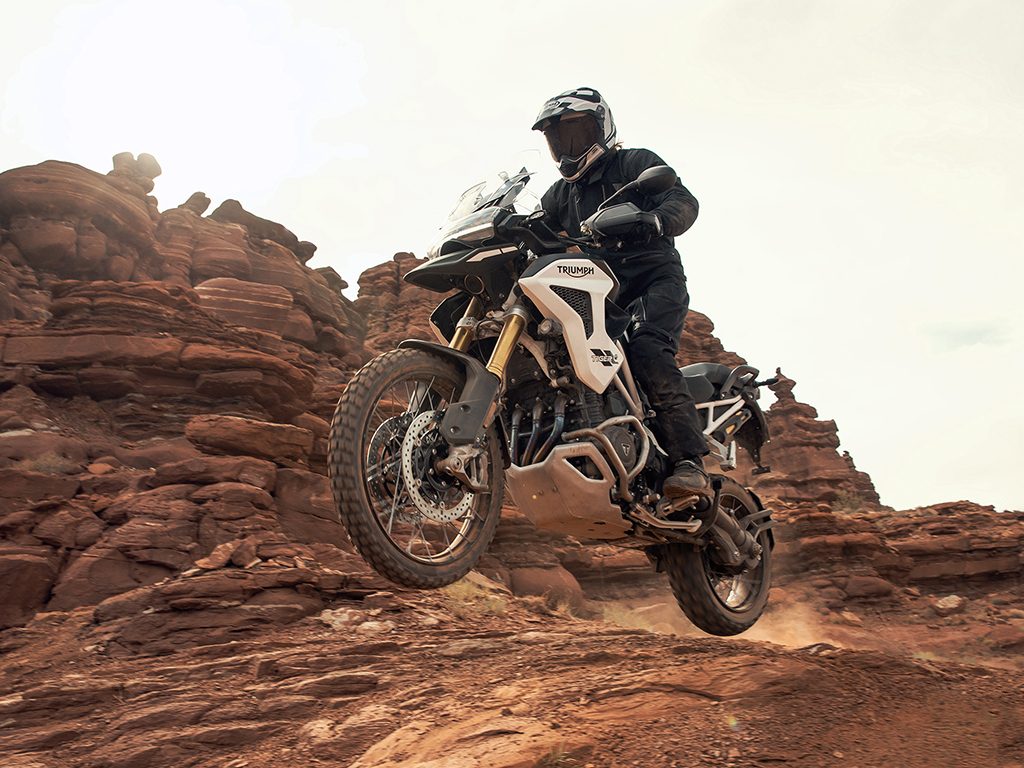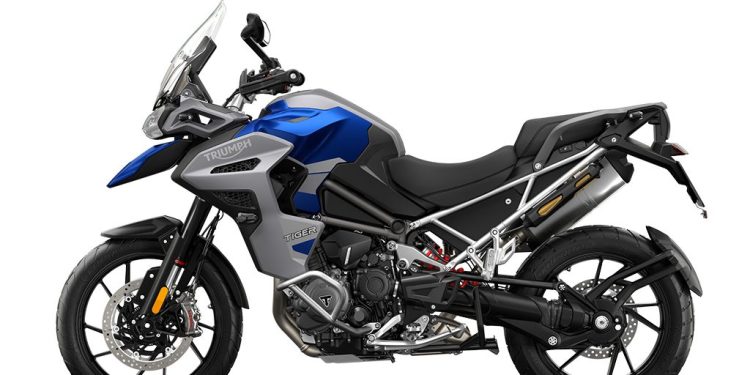Tiger in its Tank: new Triumph Tiger 1200 range revealed
Words NZ Autocar | Images Triumph Motorcycles
Forget about the stodgy old Triumph 1200 Explorer for it has been replaced by a lithe Tiger 1200 (range) that not only looks better by miles but is also much lighter by oodles. Helping boost things is a more powerful 1200cc IL3. And it also retains shaft drive so should make a wonderful adventure tourer. The GS1250 should be afraid, very afraid, especially given there are five models on offer.
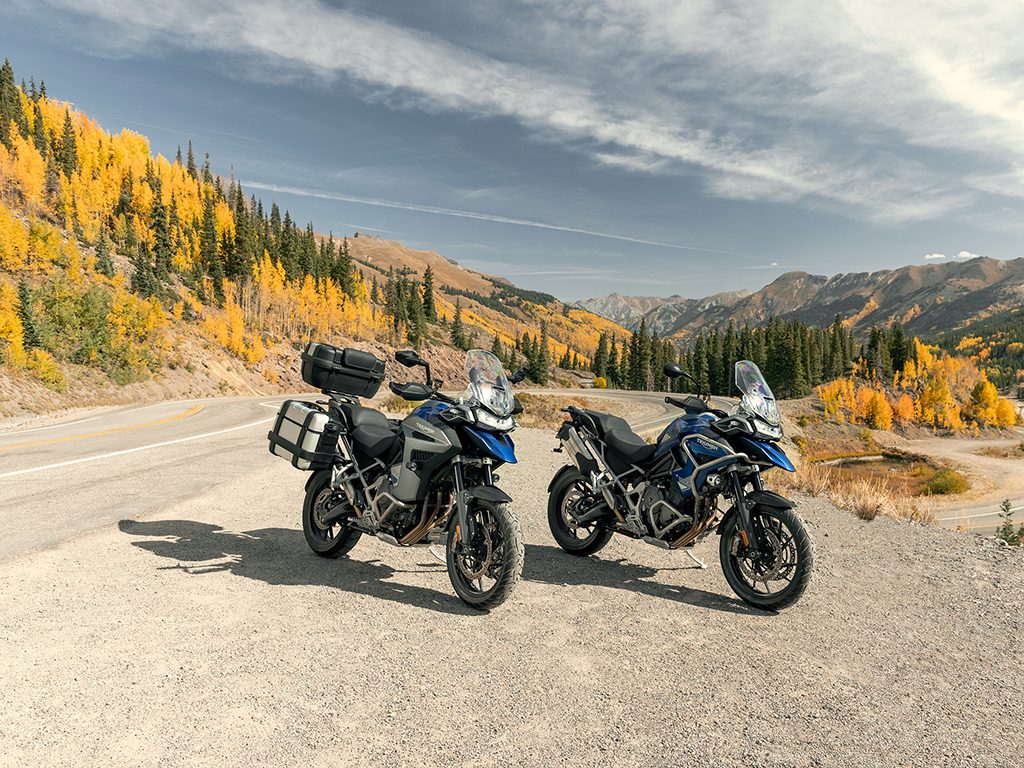
Triumph claims the new Tiger 1200 has been designed to be the world’s most capable large capacity adventure motorcycle. Aiming to be the best ride both off and on road in its segment, it also brings the option of a 30-litre fuel tank. They seem to have thought of everything.
The family comprises GT and Rally models, the former optimised for road work, and the latter for off-road antics, both featuring Showa semi-active suspension. And major dynamic improvements are partly the result of the new Tiger 1200 shedding 25kg of kerb weight, which also makes them 17kg lighter than their nearest shaft drive competitor.
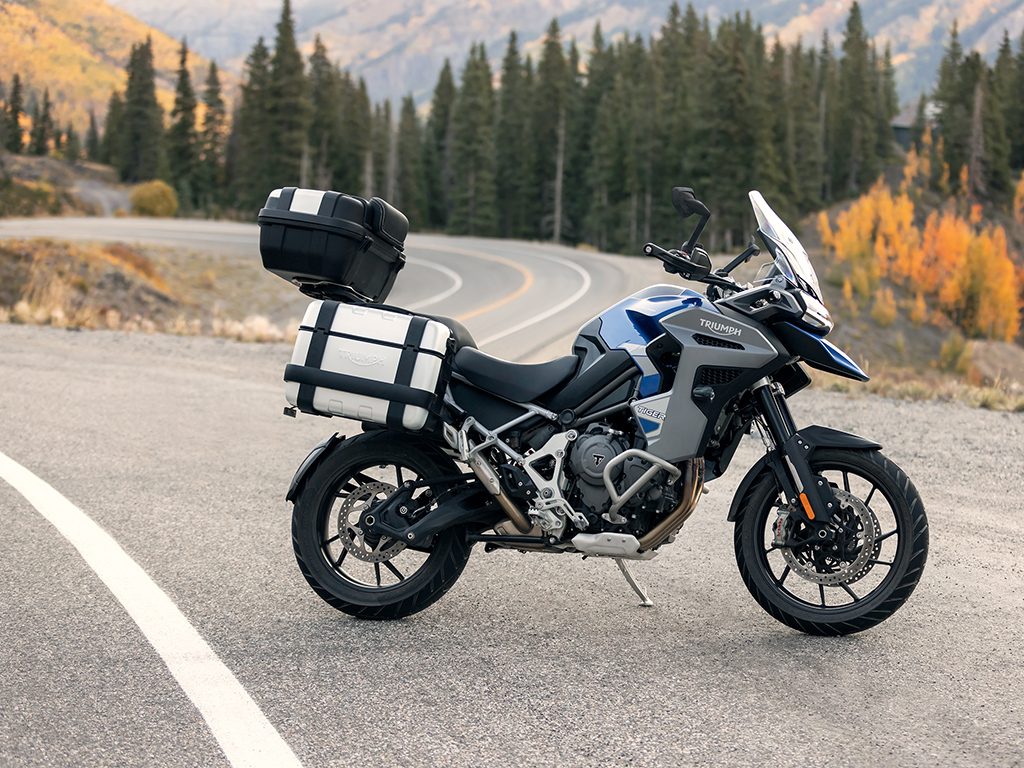
The off-road variants ride on 21-inch front and 18-inch rear wheels, while the GTs respectively use 19- and 18-inch hoops. Tanks sizes are 20 or 30L, depending on model. The big tank Explorers both get a Blind Spot radar system.
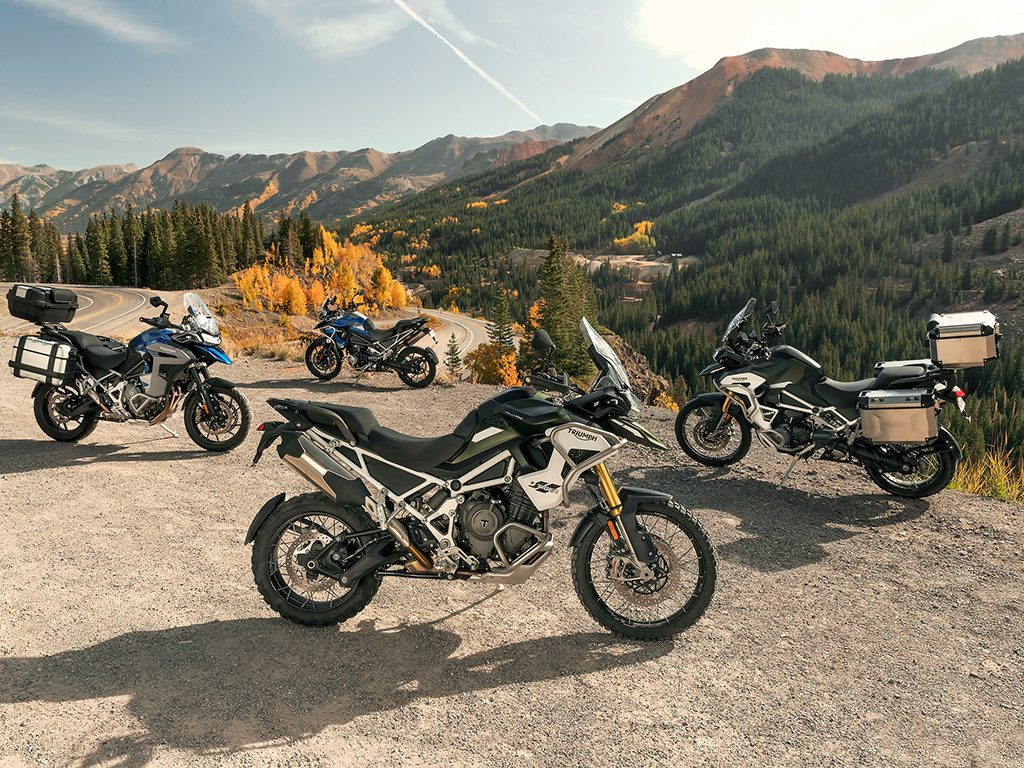
Underpinning the range is a new 1160cc triple, delivering 110kW (150PS) at 9000rpm and 130Nm of torque at 7000rpm, Triumph claiming the most power in the shaft drive class. A so-called T-plane crank gives the new Tiger 1200 engine uneven firing pulses which is said to result in greater tractability at low revs. The engine itself is more compact, helping improve handling, and a new lightweight exhaust is said to give the Explorer a distinctive tone.
Metzeler Tourance tyres are fitted to GT models, while the Rally versions come with Metzeler Karoo Street tyres for all-terrain work. Michelin Anakee Wild is an off-road alternative.
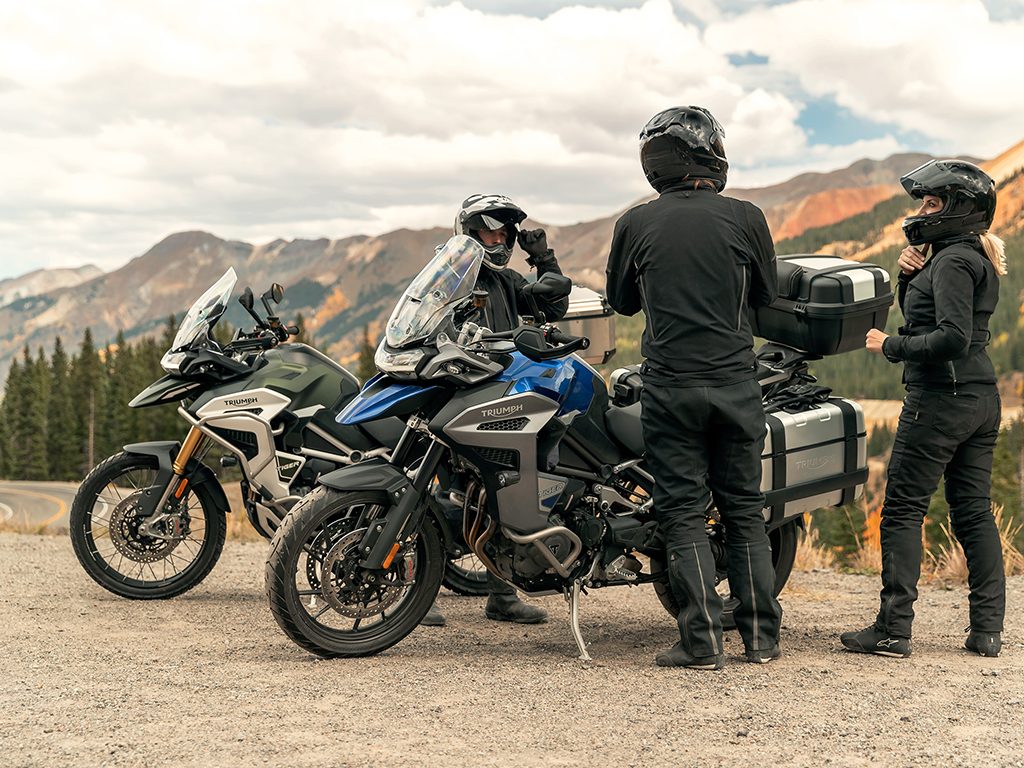
Stopping duties are handled by Brembo Stylema brakes while an IMU system ensures cornering ABS and cornering TC. Magura levers are standard. The frame and fuel tank are both constructed from aluminium, as is the swingarm, all contributing to the 25kg weight loss. A new riding triangle includes seat height adjustability of 20mm.
An adjustable screen can be operated one-handed while screen diffusers help keep wind off both rider and pillion. Handguards are standard on all models, while alu skid and sump guards are fitted to road and off-road models, respectively. Engine and fuel tank protection bars are also standard fit on certain models, and optional on others.
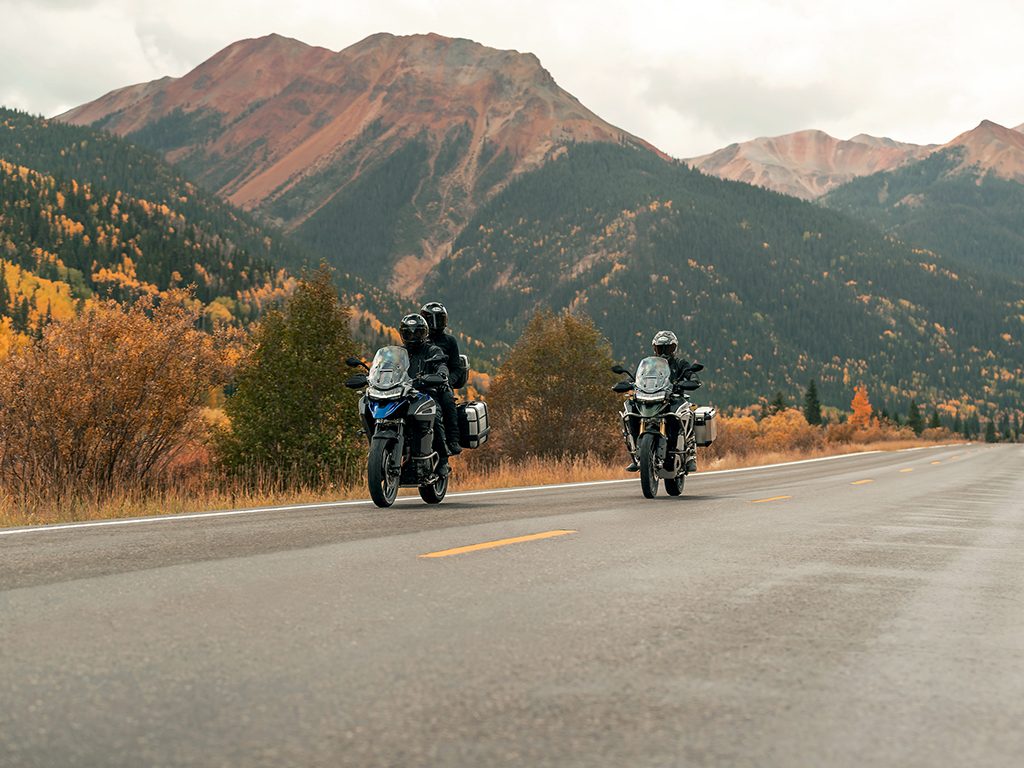
Blind spot monitoring and lane change technology are new radar-based features, while relevant riding info is displayed on a seven-inch TFT screen. A Triumph connectivity system enables phone calls and sat nav. There are also up to six riding modes, depending on model.
Other features include keyless ignition, full LED headlight incorporating a daytime running light, lean-sensitive adaptive cornering lights, and bidirectional quickshifter, all of these standard on most models. There’s also a hill hold function, heated grips, TPM, heated seats on some versions, cruise control and a centrestand.
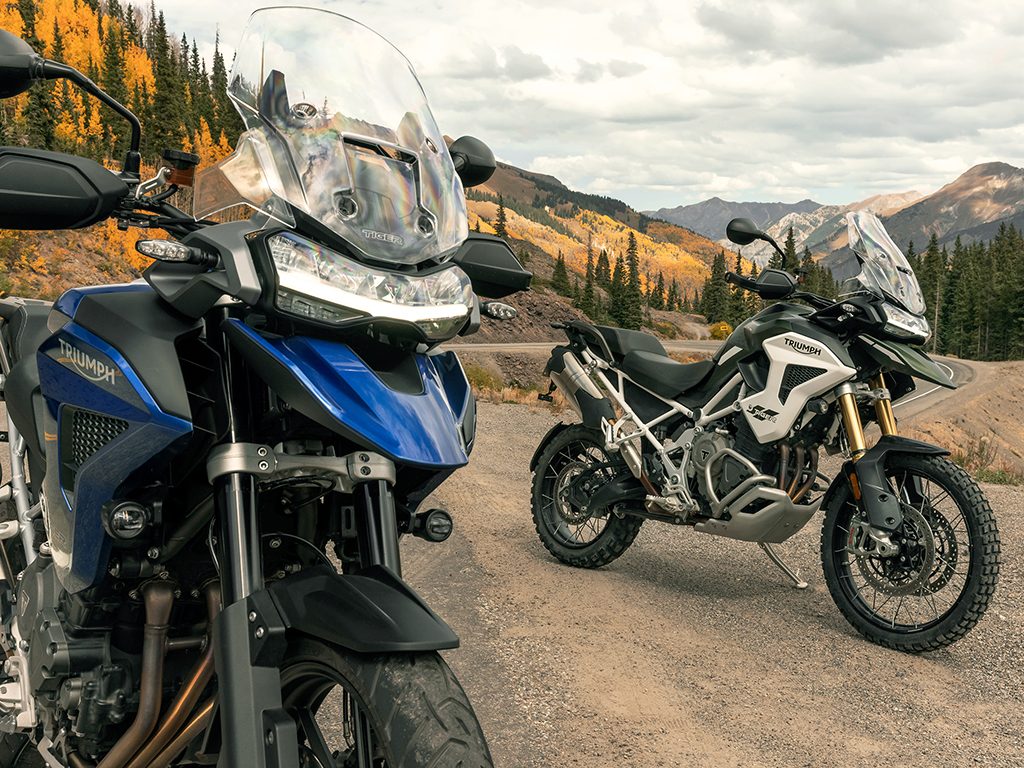
Expect the range here by mid 2022, when pricing will be released. The outgoing Explorer sold in the mid20s but this is likely to be around the $30k mark, given the top Tiger 900 finishes at $27,500.
